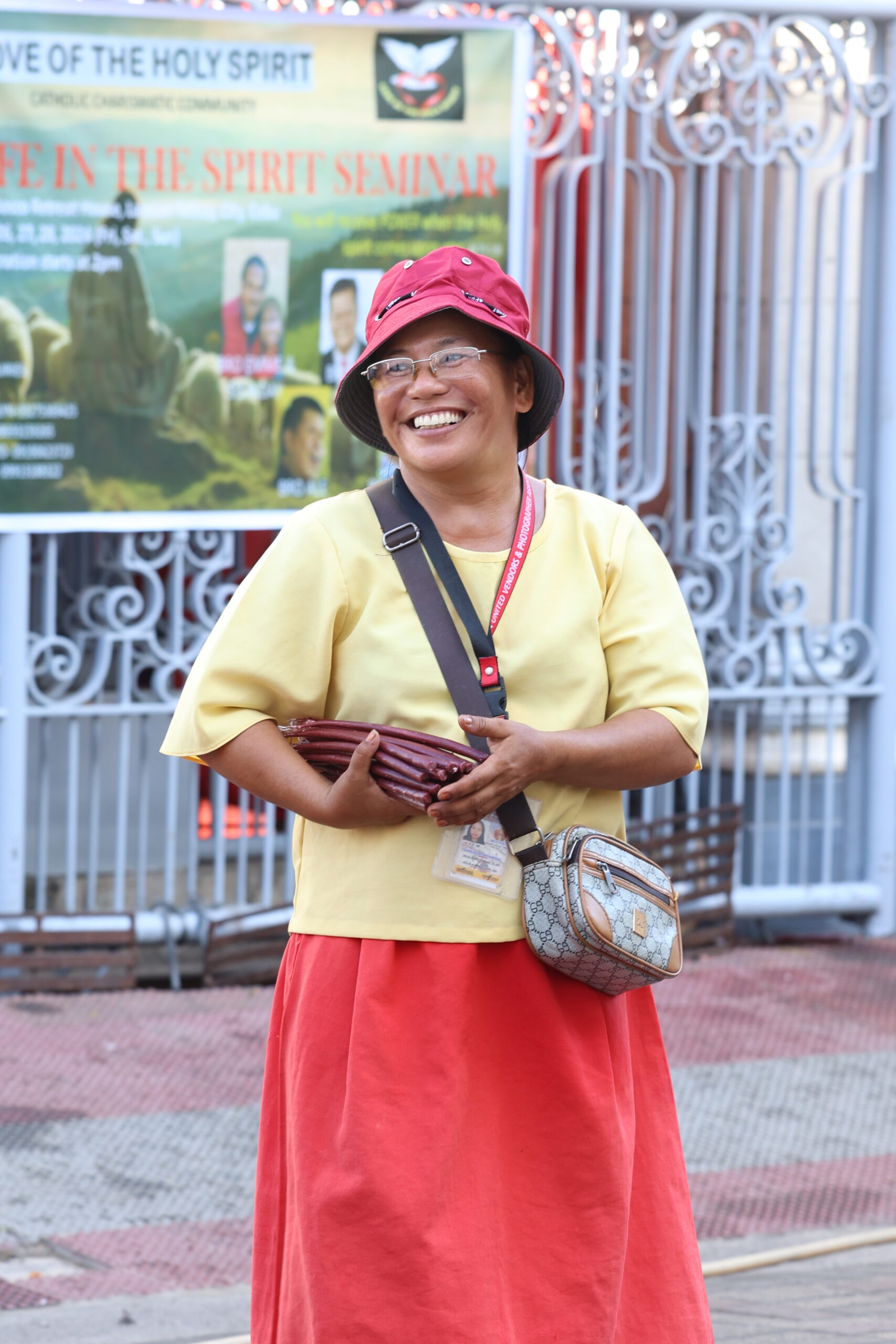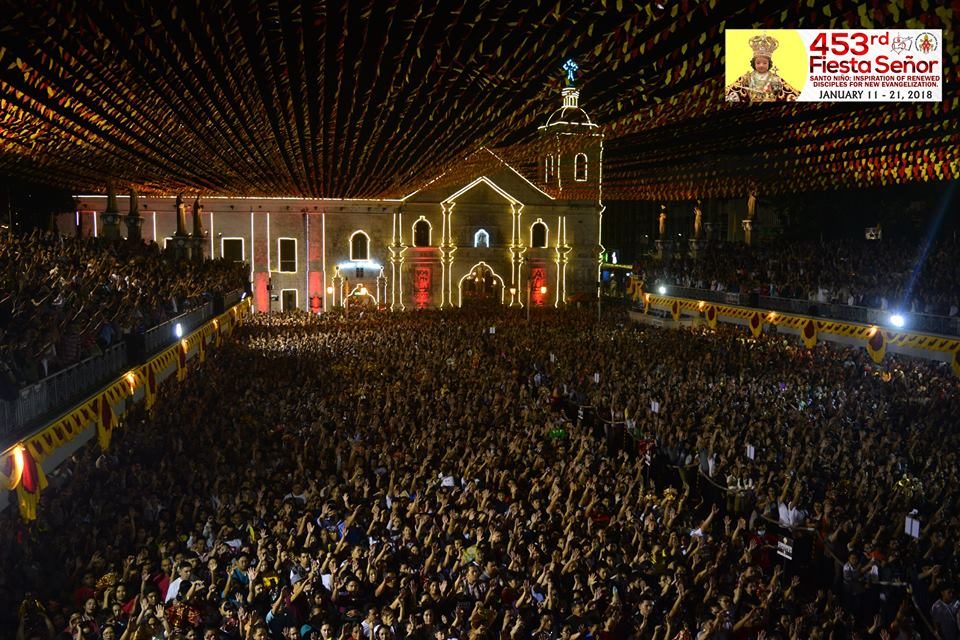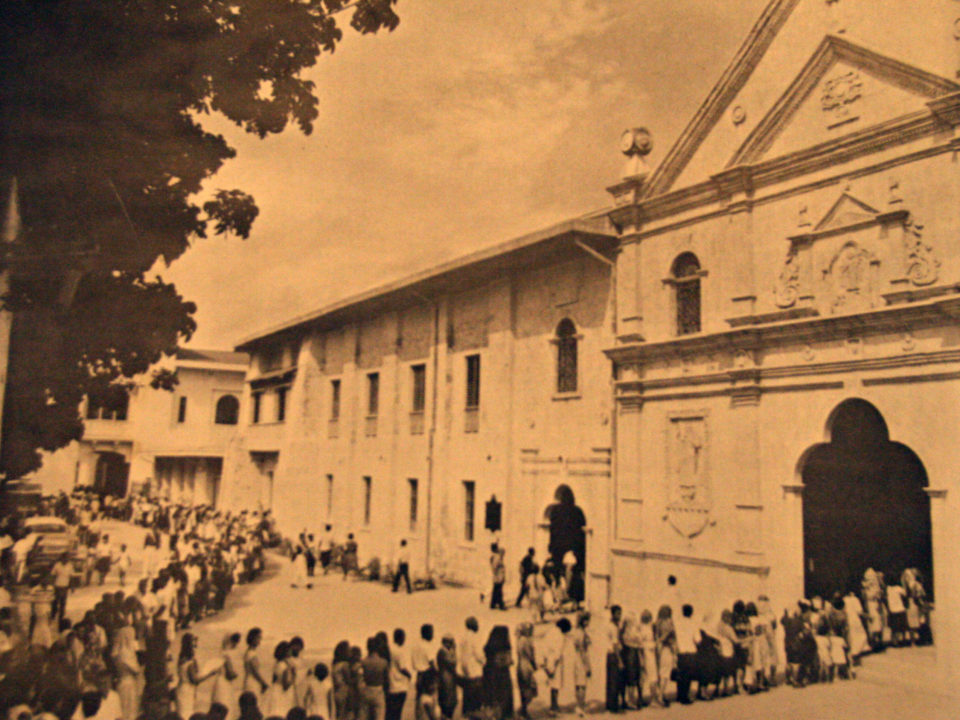“The Tig-Sinug or the Candle-vendors of the Basilica del Santo Niño”

Holding the candle upwards, waving their hands, expressing someone’s prayer, and dancing while facing the church door of the Basilica, the Tig-Sinug are candle-vendors, usually older women, who verbalize for and on behalf of the devotee’s prayers and petitions while doing a prayer dance commonly known as “Sinulog.” The Tig-Sinug would perform the ritual dance—move their legs back and forth (sayaw sinug) and wave their arms (pagwarawara) with the candle while performing the ritual, as these movements are a form of prayer to lift the intentions and thoughts to please the Santo Niño. The Tig-Sinug, who, for the price of a candle, proxy the devotee’s prayers who are shy to perform the ritual; with the intention of including the devotee’s vows (panaad). Devotees usually seek blessings for health, safety, help with problems, and extend thanksgiving. The Tig-Sinug act as intercessors and instruments of faith, sympathizing with the devotees, driven by service and faith towards the Holy Child, Señor Santo Niño.
The Tig-Sinug would start with an introductory rite characterized by an intent focus on the Santo Niño, showing candles to Him, and statement of prayers and intentions communicating the needs, requests or thanks of the petitioner locally termed as “pahinungdan” or dedication. Second, the performance is characterized by the gentle, bouncing Sinulog movement and internalizing the feelings of the petitioner to communicate the prayer adequately; a sad dance would have a generally slow tempo, and a joyful dance would have quickened, upward actions as in “mag-indursar” or endorsement. Finally, the Tig-Sinug would proceed to the exit ritual, during which the Tig-Sinug would additionally pray Catholic prayers like the “Our Father,” “Hail Mary” and “Glory be.” Afterwards, the candles would be taken to the candle area (kandilaan) or outside the Basilica to be lit as an offering; sometimes the unlit candles may be offered to the Crucified Christ inside the Basilica after the ritual. The Tig-Sinug, who pray for others and dance the “Sinulog” consider their dancing a continuing tradition of devotion that has been practiced even before the arrival of the Spaniards—a syncretic practice of ancient Visayan religion and Christianity.
The practice of the contemporary Tig-Sinug appeared during the late 1940s and 1950s as the Sinulog was danced at the general assembly during the High Mass on the feast of Santo Niño. It was a properly decorous dance for petitions and thanksgiving that was allowed for ten to fifteen minutes. However, the dance was no longer a part of the High Mass by the 1960s, and therefore, it had a discontinuous, ambivalent position in the church celebration and was relegated to the margins, ultimately starving out of existence. Later in the years, it would survive only in the form of a more decorous and “feminized” dance performed outside the church’s door by individual devotees, or candle-vendors. In the 1980s, the Basilica Minore del Santo Niño de Cebu organized a coalition of vendors around the vicinity of the Church, namely BUVPA (Basilica United Vendors and Photographers Association), to formally institutionalize and recognize the practice and importance of the Tig-Sinug and other involved organizations as part of the Basilica.
REFERENCES
Bautista, J.(2010) Figuring Catholicism: An Ethnohistory of the Santo Niño De Cebu. ADMU Press
Ness, S.A (1992) Body, Movement, and Culture: Kinesthetic and Visual Symbolism in a Philippine Community
Ness, S.A (1995) When Seeing is Believing: The Changing Role of Visuality in a Philippine Dance. Anthropology Quarterly
Mojares, R (n.d) Dancing the Sinulog. Cebuano Studies Center Files. USC
Mojares, R (2017) The Feast of the Santo Niño. An Introduction to the History of a Cebuano Devotion
Sala-Boza, A. (2005) A Formal-Functional Study of the Senor Sto. Niño de Cebu in an Ethnohistorical Perspective
Tenazas, Rosa (1965),The Sto. Niño of Cebu, USC Publication
FOCUS GROUP DISCUSSION with Kandilero/Kandilera and Dail Erwin Daitol (USC), March 26, 2024 at Basilica Minore del Sto. Niño Museum




